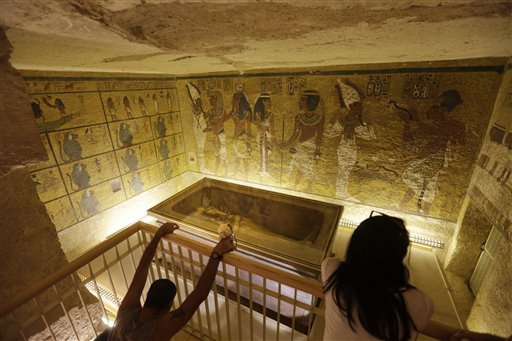CAIRO — Egypt on Saturday said there is a 90 percent chance that hidden chambers will be found within King Tutankhamun's tomb, based on the preliminary results of a new exploration of the 3,300-year-old mausoleum.
Egypt began the search for the hidden chamber last week. Announcing the results of three days of testing in the southern city of Luxor, Antiquities Minister Mamdouh el-Damaty said the findings will be sent to Japan for a month-long analysis before the search is resumed.
Luxor, in southern Egypt, served as the pharaonic capital in ancient times, and is home to sprawling temples and several ancient tombs.
British Egyptologist Nicholas Reeves theorized that Tutankhamun, better known as King Tut, who died at the age of 19, may have been rushed into an outer chamber of what was originally Nefertiti's tomb. Famed for her beauty, Nefertiti was the subject of a famous 3,300-year-old bust.
Reeves reached his theory after high-resolution images discovered what he said were straight lines in King Tut's tomb. These lines, previously hidden by color and the stones' texture, indicate the presence of a sealed chamber, he said. The images were later broadcast live on national television last September.

